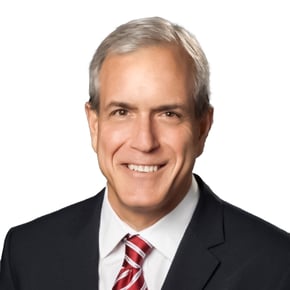As Boomers retire and Gen Xers and Millennials take center stage, I see many people "new" to leadership struggling to meet the demands of their roles.
Honestly, it's harder than ever to be an effective leader at any level of an organization. The world continues changing exponentially fast. And as we come out of our pandemic hibernation, we find ourselves facing the threat of another economic recession and the rise of artificial intelligence.
There is no going back to "business as before."
TROUBLING CHALLENGES
Leadership has always been a crucial component of any successful organization. Strong leadership drives growth, inspires innovation, and motivates people to achieve their goals. But today, employees are disengaging, quiet-quitting, or resigning in droves. Gallup finds that "Quiet quitters make up at least 50% of the U.S. workforce—probably more". An additional 18% are "loud" quitters (that is, actively disengaged). That leaves a mere 32% of employees actively engaged.1
With the rise of the gig economy and remote work, leaders have had to adapt their management style to a combination of synchronous and asynchronous in-person and remote communications. Not all have succeeded in connecting with—and staying connected to—their people in a way that leaves employees clear about what is expected of them, feeling recognized and valued, and, most importantly, supported in their work and professional development.
The unintended consequences of this disconnect? Employees become apathetic. Morale, engagement, and productivity suffer. Add to this the pandemic, which has led to a reevaluation of work-life balance. In 2022, about 50.5 million people in the United States quit their jobs2, ostensibly in search of more flexibility, better pay, and opportunities for growth.
Attracting, motivating, and retaining top talent is particularly tough in this context.
Partly in response to these issues, some leaders have dangerously over-indexed on employee happiness. Leaders must always pay attention to all their stakeholders, including customers, communities, and shareholders; otherwise, they won't have a business. No business means no jobs. In this way, leadership that becomes too employee-centric eventually becomes a detriment to employees.
I believe organizations need to provide three things to help their leadership address these troubling challenges.
1. CULTURE OF PERSONAL GROWTH & CHANGE
As Marshall Goldsmith proposed in his 2007 book What Got You Here Won't Get You There, leaders must continuously evolve and adapt to remain relevant in today's fast-paced environment. That involves taking ownership of their personal and professional development, embracing a growth mindset, and staying up-to-date with emerging trends and best practices. Organizations can support this continuous development with funding and opportunities for mentorship, coaching, and participation in industry conferences and seminars.
2. BASIC FOUNDATIONS OF GOOD MANAGEMENT
Why go back to basics? Good management practices (GMPs) help organizations endure in spite of turbulent and rapidly changing conditions. They act as a stabilizing force in the organization, much like ballast provides stability for a ship.
Essential GMPs—from objective setting and performance evaluation, active listening, and two-way feedback to performance evaluation and coaching, time management, and interviewing—have been disrupted by the pandemic and generational change. Many companies that recognize this as a major issue are resetting the organization by focusing their managerial training on these basics.
Establishing a certain level of competence in these skills across all managers, from the front line up, provides a stable foundation that makes it possible for company leaders to focus on what matters. It also shapes the company and its culture. At Google, for instance, live feedback is integral to the OKR process. According to John Doerr, the integration of these two "basics" is one of the factors that has helped their cross-functional teams and their organization achieve greatness.3
3. PLAYBOOK TO CONNECT TALENT TO VALUE
Beyond good management practices and a growth mindset, leaders in today's rapidly changing world should also master a playbook that effectively links talent to value, efficiently mitigates execution risks, and continuously transforms the organization to keep up with—if not get in front of—external change.
I have found the Talent to Value approach developed at CEO Works to be game-changing in this regard, similar to Six Sigma in terms of its profundity and impact. This contemporary approach to talent management trains leaders to:
1. Identify a company's value hotspots (places in the organization where work is being and will be done to deliver a significant chunk of the company's value agenda),
2. Develop a list of 25 to 50 critical roles doing essential work to deliver the value at those hotspots,
3. Analyze the inherent risks in the work and the design of those roles,
4. Assess the readiness of incumbent talent to do the work of the role in context, and
5. Build a "human capital balance sheet" that maps the risks to value across the organization and precisely pinpoints a vital few recommendations to mitigate the most significant risks.
The best thing companies can do in these uncertain times is to provide these three things to their "new" and emerging leaders. By mastering the basics of good management and learning this fresh approach to talent management in a culture of growth and learning, they will be much better prepared to lead people into the future, whether that future includes a recession and an artificial intelligence revolution or not.
Want your leaders to learn how to connect talent to value? Contact us to set up a call.
NOTES
1 Jim Harter, "Is Quiet Quitting Real?", Gallup, September 6, 2022. Accessed May 4, 2023, at https://www.gallup.com/workplace/398306/quiet-quitting-real.aspx .
2 Greg Iacurci, "2022 was the 'real year of the Great Resignation' says economist", CNBC, February 1, 2023. Accessed May 4, 2023, at https://www.cnbc.com/2023/02/01/why-2022-was-the-real-year-of-the-great-resignation.html#:~:text=About%2050.5%20million%20people%20quit,to%20leave%20the%20workforce%20altogether.
3 John Doerr, Measure What Matters: How Google, Bono and the Gates Foundation Rock the World with OKRs (Portfolio Penguin Books: New York, 2018).

